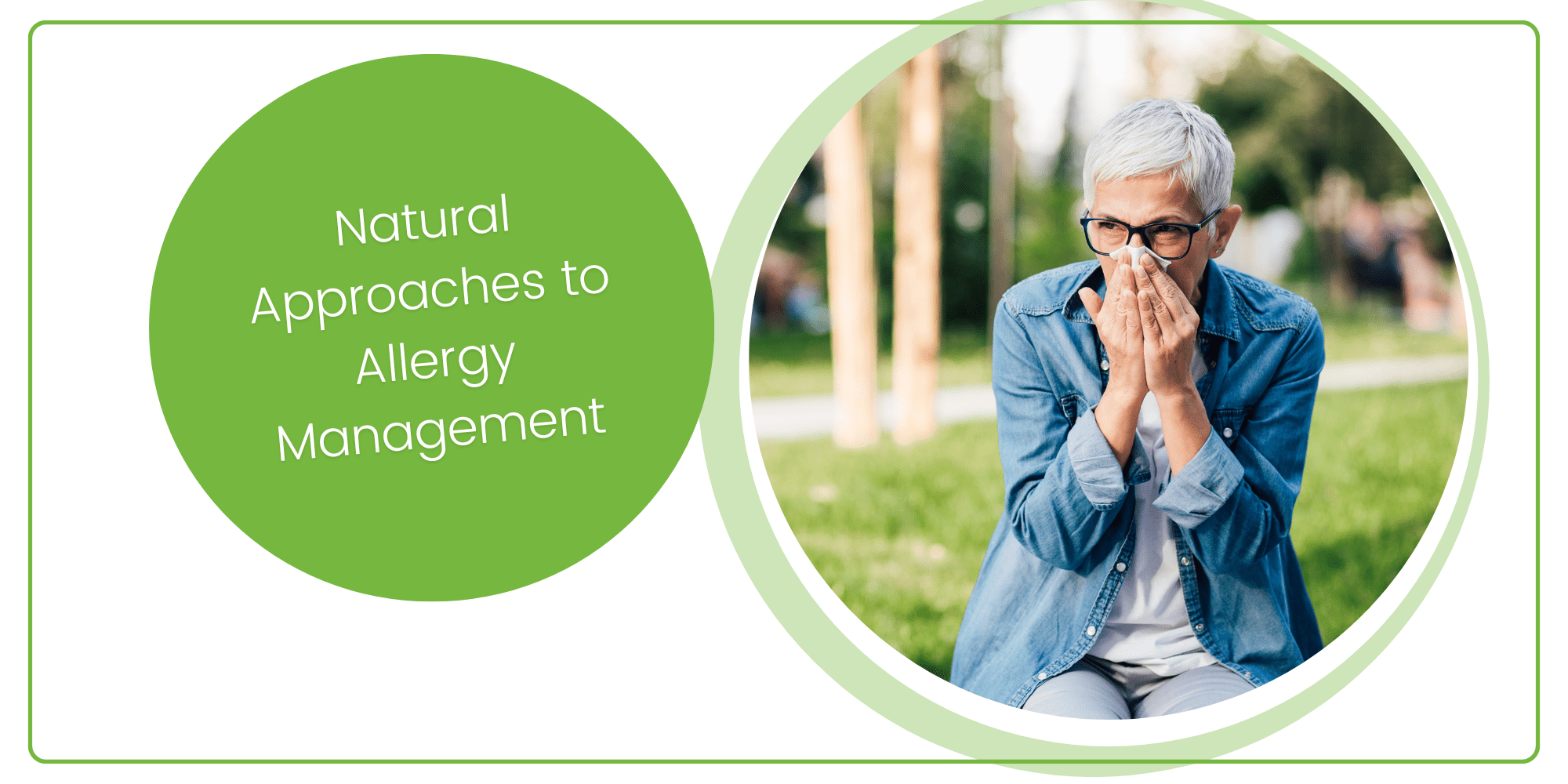
Pollen allergies are prevalent each Spring, and for those susceptible, it’s a time of coughing, sneezing and general misery. If you are one of the affected sufferers, there are some natural and holistic approaches that can help you avoid the cost and side effects of common pharmaceutical solutions. This article will investigate the nutritional and lifestyle approaches and interventions available.
Nutrient Approaches
L-Ascorbate (vitamin C). L-Ascorbate has antiinflammatory, antioxidant, and direct antihistaminic activity. Rather than blocking histamine receptors, ascorbate works by reducing the amount of histamine you produce, potentially diminishing the allergic response. Vitamin C is also well known for its ability to reduce severity and duration of “common cold” symptoms. It can directly boost immune response and produce interferons that interfere with viral replication. We recommend choosing 100% l-ascorbate, fully reduced and buffered with alkalinizing minerals for the best bioavailability and function.
Quercetin is a naturally-occurring polyphenol found in onions, apples, dark berries, grapes, kale, broccoli, tea, dill, and many other herbs, vegetables, and fruits. It has antioxidant and anti-inflammatory activity, as well as significant antihistaminic effects, making it a good choice for allergy sufferers. Quercetin prevents activation and recruitment of mast cells while stabilizing their membranes and blocking subsequent degranulation – which can help manage Type 1, or immediate, allergies.
Separately, quercetin has direct antiviral activity. It appears to block virus entry into cells and inhibit viral replication in in vitro studies and is suggested as a supplemental agent for both prevention and treatment of viral illness.
All quercetins, however, are not alike. Poor bioavailability or toxicity make many forms inappropriate for health management. Quercetin “dihydrate” is the preferred form, as it is easily bioavailable, especially to the immune first responder cells. Flavonols like oligomeric proanthocyanidins (OPC) can work hand in hand with quercetin dihydrate to enhance antioxidant benefit.
Quercetin and Ascorbate Together – A Synergy
Quercetin and ascorbate together may have a synergistic effect due to their overlapping effects both on the immune system and on attacking viruses . Ascorbate can also recycle quercetin, and quercetin dihydrate preserves the integrity of ascorbate by enhancing the reduction of the intermediary compound dehydroascorbic acid (oxidized ascorbate) back to fully reduced ascorbate, prolonging the action of vitamin C.
Probiotics
Probiotics can be beneficial in the treatment of allergic rhinitis. It has been determined that 70% of our immune cells reside in the intestinal tract, and these cells communicate directly with the immune system, modulating response. Some probiotics have been shown to suppress expression of the genes that code for histamine receptors and the enzyme to convert histidine to histamine, thus decreasing the amount of histamine produced during an allergic response. This is an exciting area of continued study.
Vitamin D
Vitamin D deficiency has also been implicated in allergy development. Vitamin D activates regulatory cells that prevent the release of chemicals that cause and worsen allergic response. Adequate levels of vitamin D, from the sun, food, and supplementation will help keep your immune system functioning properly. Keep blood levels of vitamin D in the 50-80 ng/ml range. Test your levels today.
Lifestyle Approaches
HEPA/ULPA/PECO Filters
Filters can remove tiny particles from room air. The various filters use different technologies to filter the air and remove particles of different sizes. A HEPA (high-efficiency particulate absorbing) filter can theoretically remove 99.97% of particles larger than 0.3 microns from the air, including most dust, mold, pollen, bacteria, etc. An ULPA (ultra-low particulate air) filter can remove 99.99% of 0.12 micron size or larger particles from the air, making it even more powerful than HEPA. PECO filters use photoelectrochemical oxidation to destroy the impurities in the air, rather than trap them. A PECO filter can neutralize molecules as small as 0.1 nm. One study found that allergy symptoms in the nose and eyes decreased significantly when a PECO filter was used over the course of four weeks.
Acupuncture
Acupuncture uses thin needles placed in the skin to target a variety of health conditions. This practice has been common in Eastern countries for many years and is increasing in popularity in the West. Acupuncture has been proven effective to treat allergic rhinitis; it may regulate immune system function through a variety of steps in the immune pathway. Effects are cumulative and develop over time, so don’t expect a quick fix. You’ll want to avoid acupuncture if you are taking blood thinners, have a bleeding condition, are pregnant, or have a pacemaker.
Neti-Pot
A neti pot is a teapot-like device used for nasal irrigation with a saline solution. The process of irrigating the sinuses can flush out mucus and allergens, and help relieve congestion. The FDA recommends, for safe use, to use distilled or sterile water, or water that you have boiled for 5 minutes and cooled to lukewarm, then add the supplied saline packets. Improper use can increase the risk of infection; never use tap water in a neti pot.
Other Interventions
One of the easiest interventions for allergy relief is to keep doors and windows closed during allergy season. Remove shoes when coming in from the outdoors to avoid pollen being tracked through the home. And finally, consider washing your hair and changing clothes when coming in from outdoors if your allergies are severe.
A Note About Delayed Allergies
The coughing and sneezing discussed above are a result of IgE-mediated reactions. The triggers of these type I immediate allergies are usually easy to identify because reactions occur soon after exposure (usually within a few minutes to 3 hours). Identifying a trigger to which you were exposed up to three weeks ago is much more challenging, but equally important. Only by identifying these delayed hypersensitivities and avoiding the offending substances, are you able to restore immune resilience and optimal protection. Ask your healthcare practitioner about the specialized LRA tests to identify these delayed (type II, III, IV hypersensitivity) reactions.
